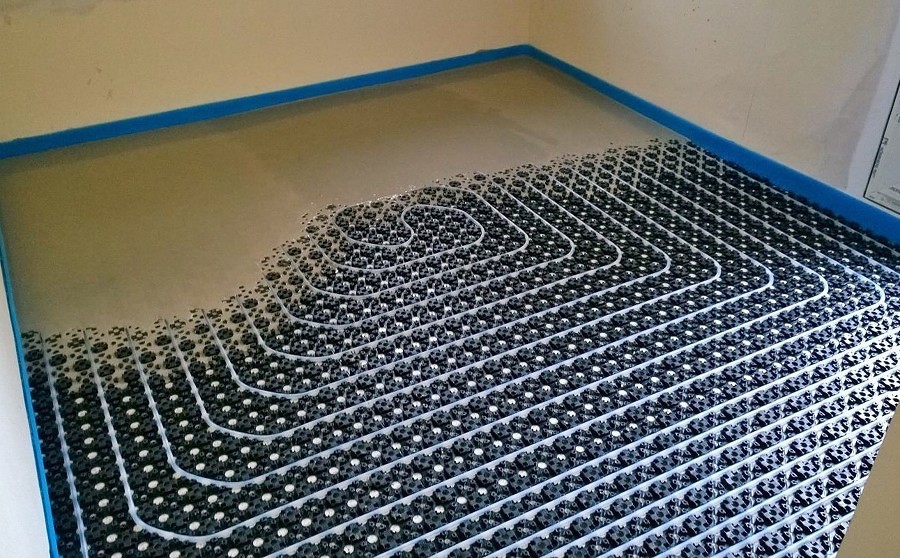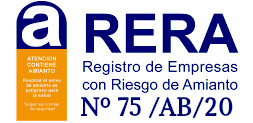Introduction: The Importance of Indoor Temperature
When we seek maximum comfort in our home, indoor temperature plays a crucial role. In the cold months, choosing a suitable heating system becomes essential. On this occasion, we will explore underfloor heating in detail, from its fundamentals to its benefits and approximate costs.
What is Underfloor Heating?
Underfloor heating is a heating system that takes advantage of the thermal inertia of the floor to radiate heat. This system uses a network of plastic pipes placed under the floor, allowing both heat and cold to be distributed evenly throughout the room. In situations where underfloor heating is not viable, walls and ceilings become alternatives for heat emission.
How Underfloor Heating Works
Underfloor heating works using basic thermodynamics. A system of pipes heats the floor and a layer of mortar, which acts as an energy lung. The surface temperature of the floor cannot exceed 29 ºC according to current regulations. Despite the apparent complexity of installing a kilometre of pipes, the design and technique used guarantee an orderly process, and once completed, the desired coating can be chosen.
Types of Underfloor Heating
There are two main types of underfloor heating: water and electric.
1. Water Underfloor Heating: This system uses pipes that transport hot water underground. Connected to a boiler or renewable energy sources such as aerothermal or geothermal energy, it offers energy efficiency and uniform heat distribution.
2. Electric Underfloor Heating: It works by means of electrical resistors that generate heat when the current passes through. Ideal for small spaces, its installation is quicker, but its consumption can be higher.
Benefits of Underfloor Heating
After understanding installation and operation, we will explore the many advantages of underfloor heating:
High Performance: Thanks to its thin circuits, underfloor heating requires less energy to reach the desired temperature.
Low Consumption: Its low-temperature nature drives significant savings compared to conventional systems, consuming between 10% and 20% less.
Ecology and Sustainability: Often powered by renewable energies such as aerothermal or geothermal energy, underfloor heating stands out for its respect for the environment.
Cooling Option: It allows cooling through cold water in pipes, offering versatility in air conditioning systems.
Radiator Clearances: By being installed under the floor, walls or ceilings, it frees up the living space from radiators, providing a larger and clearer environment.
Healthy and Comfortable: It prevents dryness, headaches and drafts, offering a feeling of comfort, especially with its warm feet effect.
Request your free quote with ReproBarcelona
Challenges and Considerations
Despite its benefits, underfloor heating presents certain challenges to consider:
Initial Investment: Although cost effective in the long run, initial implementation may cost more than other heating systems.
Remodeling of Existing Homes: Installation in existing buildings may require significant remodeling, door adjustments, and floor elevation.
Risk of Leakage: The water system carries the risk of leaks, which can damage the structure and require intrusive repairs.
Response Time: Unlike traditional radiators, underfloor heating may take longer to reach the desired temperature.
Limitations with Furniture: Not all furniture is compatible, some may affect the even distribution of heat.
Installing Underfloor Heating
Installing underfloor heating is a detailed process:
Evaluation and Design: A detailed evaluation is carried out and a system is designed to ensure uniform heat distribution.
Soil Preparation: The base is prepared with insulation and leveling.
Installation of Pipes or Cables: The network of pipes or cables is installed uniformly.
Coating and Protection: They are covered with a heat-conducting material, such as mortar, to protect and ensure efficient heat transmission.
Paving Laying: The flooring compatible with underfloor heating is installed.
Connection and Testing: It is connected to the power system and tests are performed to ensure proper operation.
Underfloor Heating in Existing Homes
It is entirely feasible to install underfloor heating in existing homes, although it involves removing the current floor covering and installing one compatible with the system.
Underfloor Heating Costs
Costs vary depending on the brand and technology chosen, and are around €50/m2, not including the price of the mortar. Although the initial investment may be higher, the long-term benefits compensate for this outlay.
If you are interested in transforming your home with underfloor heating, do not hesitate to contact us for a personalized quote. At ReproBarcelona, we are here to make your home more comfortable and efficient.











